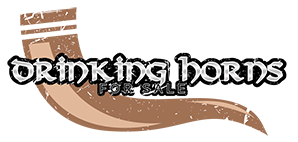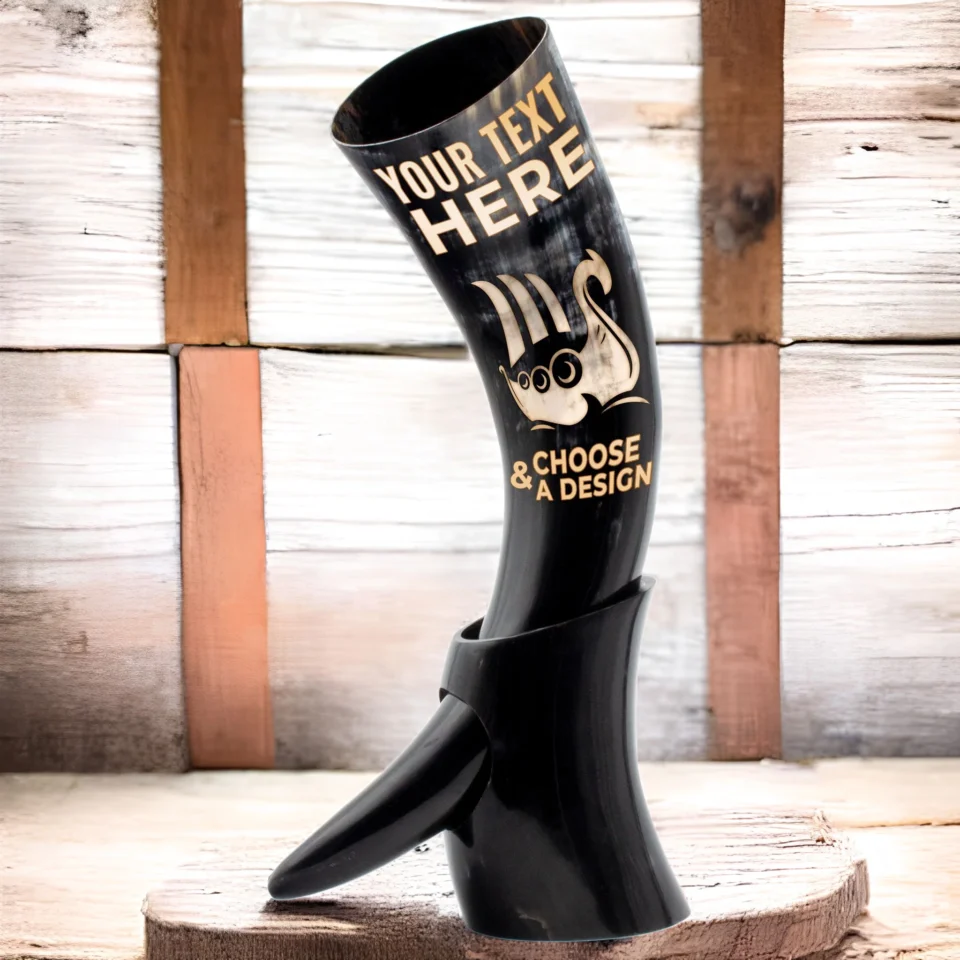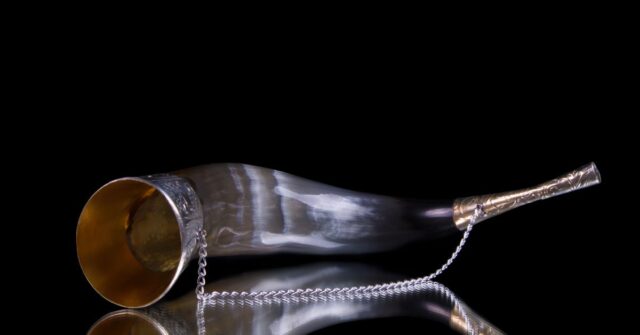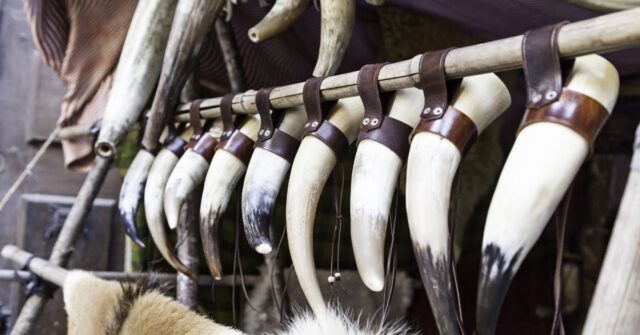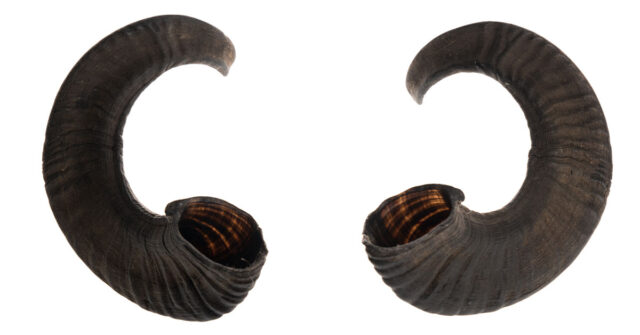So, you’re keen on diving into the ancient world of the Vikings and crafting something that not only hollers tradition but can also make some noise?
A blowing horn, the very artifact that echoed through the fjords and across the meadows of Scandinavia, is what you’re aiming to create.
Let’s embark on this journey together, with history as our guide and a dash of humor to keep things lively. After all, who says history lessons have to be dull?
Introduction to Viking Blowing Horns
Before we get our hands dirty, let’s talk history.
Viking blowing horns were not just musical instruments or mere objects of daily use; they were symbols of power, communication tools, and an integral part of ceremonies and battles.
Imagine the scene: a Viking chieftain standing atop a hill, horn to his lips, sending a sound that ripples across the land. Captivating isn’t it?

The Historical Significance of Blowing Horns Among Vikings
Blowing horns held a place of honor in Viking society. They were used to announce the arrival of friends or foes, to gather people for assemblies, or to call warriors to battle.
These horns were more than just objects; they were a voice for the Viking people, a sound that could inspire fear, rally troops, or celebrate victories.
Uses and Symbolism of Blowing Horns in Viking Culture
Beyond their practical uses, these horns were drenched in symbolism. They could signify status, mark significant events, and even carry religious connotations.
To craft one is to weave yourself into this rich tapestry of history, echoing the ancient calls of the Norsemen.
Choosing the Right Materials
Alright, history lesson over. Let’s get into the nitty-gritty.
Your choice of materials will significantly affect the outcome of your project. Not just any old horn will do; you need one that sings of the past while still being workable in the present.
Types of Horns Suitable for Making Blowing Horns
Typically, cow or buffalo horns are your go-to materials. They have the right curve, thickness, and length.
You’re looking for a horn that speaks to you, one that looks as if it could have sailed over the North Sea itself.
Tools and Supplies Needed for Crafting
As for tools, you’ll need a saw, sandpaper, a carving knife, and some patience. Yes, patience is a tool in this project, and possibly the most important one.
You’ll also want some beeswax and oil for finishing touches.
Preparation of the Horn
First things first: you need to clean and prepare your horn.
This isn’t a task for the faint-hearted, but remember, Vikings weren’t known for their delicate sensibilities. Neither should you be, at this stage.

Cleaning and Sanitizing the Horn
Begin by giving your horn a good wash with some soap and warm water. You’ll want to remove any debris or remnants from its previous life.
Boiling the horn can help in removing the inner core and sanitizing it. Just imagine a Viking spa day, but for your horn.
Softening the Horn for Shaping
Softening the horn can be achieved by soaking it in warm water or gently heating it. This makes it more malleable for shaping.
Think of it as coaxing the horn into its new role; you’re not just a cow’s accessory anymore, you’re about to become a Viking legend.
Shaping the Horn
Now comes the part where you start to see your horn take shape. It’s a bit like sculpting, but instead of clay, you’re working with a piece of history. No pressure, right?
Carving the Mouthpiece
The mouthpiece is crucial for getting the right sound. Carving it just right requires precision – think of it as performing surgery, but on a horn.
A small, round file can help shape the mouthpiece and remember, smoothness is key unless you’re fond of splinters on your lips.
Forming the Bell: Techniques and Tips
The bell is the wider end of the horn and shaping this part can influence the sound. Gently heating the horn allows you to mold it, but be careful not to overdo it.
You’re aiming for a shape that could summon a Viking warrior, not a fire brigade.
Decorating Your Blowing Horn
Now, for the fun part – adding your personal touch. Vikings often decorated their horns with symbols and designs significant to their culture.
Here’s where you can let your creativity (and maybe a bit of your inner Viking spirit) run wild.
Traditional Viking Designs and Symbols
Consider incorporating traditional Norse symbols such as runes, knotwork, or animal motifs. These designs not only beautify your horn but also connect it to the rich tapestry of Viking lore.
Each mark you make is a nod to the past, a way to carry forward the legacy of the Vikings into the present.
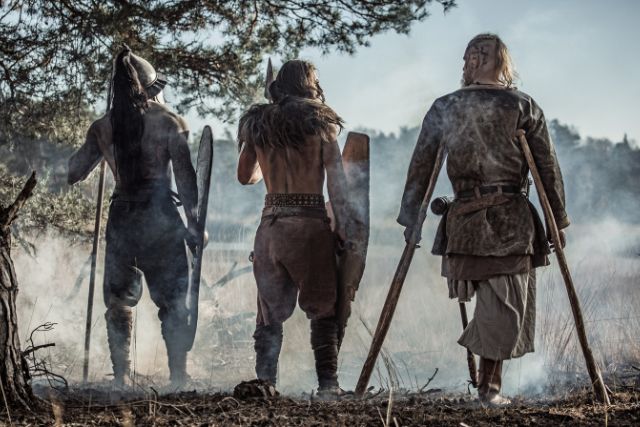
Modern Techniques for Decorating Horns
If you’re feeling adventurous, why not blend tradition with modernity? Laser engraving, for example, can offer precision while allowing for intricate designs.
Just imagine a Viking warrior with a laser gun – okay, maybe don’t. But you get the idea.
Sealing and Finishing Touches
Once decorated, sealing your horn with beeswax or a food-safe sealant will protect both the material and your artwork. It’s like sending your horn into battle with armor; it needs protection to survive.
Making a Leather Strap for Your Horn (Optional)
Want to carry your horn around? Of course, you do. Let’s fashion a leather strap, Viking-style. This is not just functional; it’s another chance to showcase your craftsmanship.
Materials and Tools Required
You’ll need a strip of leather, some leather dye, a few tools for cutting and fastening, and perhaps a Norse prayer or two for good measure.
Remember, you’re not just making a strap; you’re preparing for a journey.
Step-by-Step Guide to Crafting a Leather Strap
Measure, cut, dye, and fasten. These steps might seem simple, but each one is an opportunity to infuse your work with intention.
Imagine your horn hanging by your side as you stand on the prow of a Viking ship, ready to conquer new lands.
How to Play Your Viking Blowing Horn
You’ve made it, decorated it, and it’s ready to roar. But how do you actually play this ancient instrument?
Fear not, I won’t leave you hanging like a lone shield on a battlefield.
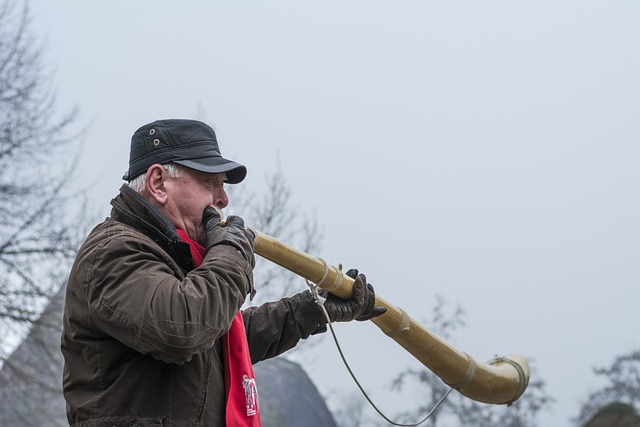
Basic Techniques for Beginners
Start by holding the horn securely and forming a tight seal with your lips on the mouthpiece.
Blow gently at first; think of whispering a secret to a Viking god. Then increase the volume and pressure or the air leaving your mouth.
With practice, you’ll find the sweet spot that brings your horn to life.
Tips for Producing Different Sounds
Varying the force of your breath and the position of your lips can create different tones. Experiment with it.
Find the sounds that would have made your Viking ancestors proud, or at least not have them throw you overboard.
Maintenance and Care of Your Blowing Horn
Like any cherished item, your horn requires care. Clean it regularly, keep it dry, and treat it with oil or wax occasionally.
It’s not just a horn; it’s a companion on your journey through the echoes of history.
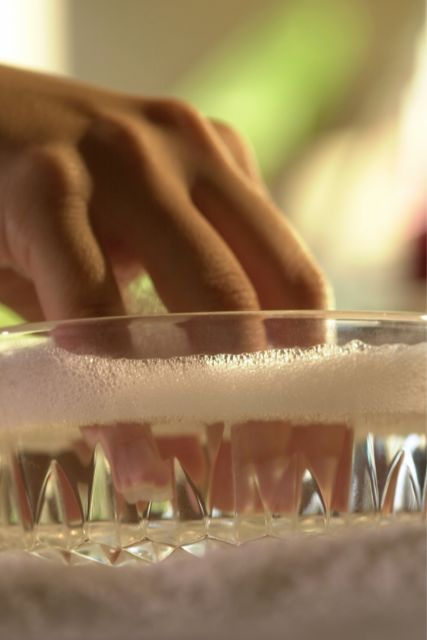
Incorporating Your Blowing Horn into Modern Life
So, you’ve got a Viking blowing horn. Now what? Does it just sit on a shelf, gathering dust? Not on my watch.
Let’s integrate this piece of history into your life in a way that even a Viking couldn’t have imagined.
Reenactments and Cultural Events
Your horn is not just an instrument; it’s a passport to the past.
Reenactments, cultural events, or even just a gathering of history buffs – your horn can be the centerpiece, a conversation starter, and a bridge to a bygone era.
Decorative Purposes
When not in use, your horn can be a stunning piece of decor. Mount it on a wall, place it on a shelf, or use it as the most epic paperweight ever.
It’s a statement piece that says, “Yes, I have a Viking blowing horn, and I know how to use it.”
Educational Uses
For those with a passion for teaching or simply sharing knowledge, the horn can be a powerful tool. It’s a tangible link to the past, a way to make history come alive.
Imagine the look on someone’s face when, instead of showing them a picture of a Viking horn, you play them a note that resonates through the centuries.
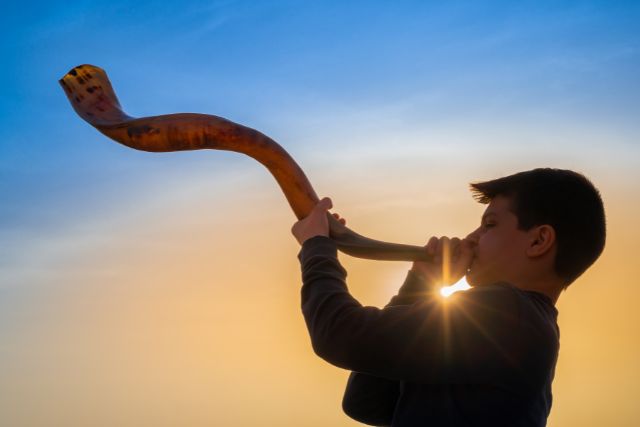
Conclusion: The Resonance of Viking Heritage Today
In crafting your own Viking blowing horn, you’ve done more than just create an instrument; you’ve forged a link to the past.
This isn’t just about recreating an artifact; it’s about understanding and appreciating a culture that has influenced countless aspects of modern life.
From the courage to explore unknown territories to the artistry and craftsmanship in everyday objects, the Viking spirit lives on. And now, with your newly made horn, you carry that spirit into the future.
